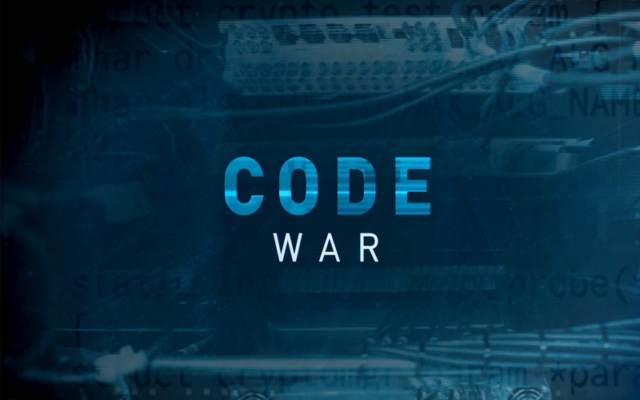The United States says it stopped a large crime ring that infected hundreds of thousands of computers across the world. The hunt is now on for this Russian man, Evgeniy Bogachev, who investigators claim was behind it all. They say the scheme worked by placing malicious software on computers. That software would then either steal financial login information — or lock the computer, demanding a ransom be paid. The U.S. says the scheme could be responsible for “financial losses in the hundreds of millions of dollars.”
This is just the latest in a string of indictments and accusations in the ongoing fight against cyber espionage and cyber war. The issue has been propelled to the top of the international agenda, especially in light of the U.S. charging five Chinese military officials last month with espionage. On CCTV America’s Insight, correspondent Nathan King investigates the cyber age and the dilemma posed by digital advances.

Code War: Cyber Hacks Already Being Used As Weapons of War
The United States says it stopped a large crime ring that infected hundreds of thousands of computers across the world. The hunt is now on for this Russian man, Evgeniy Bogachev, who investigators claim was behind it all. They say the scheme worked by placing malicious software on computers. That software would then either steal financial login information -- or lock the computer, demanding a ransom be paid. The US says the scheme could be responsible for "financial losses in the hundreds of millions of dollars."Craig Wright, a researcher at Charles Sturt University, also joined CCTV’s discussion on this topic.

Interview with Craig Wright on code war
Craig Wright, the researcher at Charles Sturt University also joined CCTV's discussion on this topic.1983, when the Internet was in its infancy, the movie “War Games” envisages a hacker gaining access to America’s nuclear arsenal with near catastrophic results. Fast forward to 2010 and hacking a nation’s nuclear program becomes a reality.
Stuxnet has been called the first truly cyber weapon.
A computer virus – 20 times more complex than any previous code – secretly penetrated Iran’s uranium enrichment facilities and causes centrifuges to spin out of control, possibly setting back Tehran’s nuclear program years.
This all happened without a shot being fired, and while the United States and Israel are suspected, there is no proof.
“The type of attack that seemed to be under the radar that didn’t provoke a violent response, kind of operated in this area where states like to use some sort of coercion but not cross the redline for the use of armed force,” said Adam Segal of the Council on Foreign Relations.
Stuxnet’s success meant a planned U.S. or Israeli military attack on Iran’s nuclear facilities became unnecessary-Exhibit A for advocates of cyber conflict.
But Stuxnet is an exception in the short history of cyber-warfare.
One of the first national cyber-attacks hit here – Tallinn, the capital of Estonia in 2007. After a spat with Russia over the removal of a war memorial, government online services were crashed and country’s central bank attacked.
In 2008 – as Georgia and Russia were involved in a very physical conflict – Georgian networks were hacked-low-level attacks, perhaps, in coordination with the war on the ground. That may have set a pattern for the future.
“I think the majority of action is going to be much more low-level more like what we’ve seen in Crimea, which had to with information warfare and taking out some networks and some cell phone systems. I think a ‘cyber-Pearl Harbor,’ at this point, is very unlikely,” said Adam Segal, Senior Fellow at the Council on Foreign Relations.
But nations are taking steps to protect themselves from a so called “cyber-Pearl Harbor.” Witness this exercise here in Washington D.C. “Cyber-shockwave” involved former administration officials working out how to deal with a potential cyber-attack on America’s infrastructure.
And as military spending climbs across Asia, more money is being piled into cyberwarfare units at a national level.
Even in the U.S., where defense budgets are being slashed, U.S. Cyber Command is expanding from under a thousand staff to nearly 5,000 over the next several years.
While resources are being piled into cyber conflict capabilities there is also a push to try and limit what’s allowed when it comes to cyberwarfare.
Efforts are underway at the United Nations; NATO; and between China and the U.S. to try and ban attacks on power stations, water supplies and other infrastructure that civilian populations depend on.
But as the Stuxnet virus proves, it is possible to launch a sophisticated cyberweapon into the heart of a nation’s infrastructure and remain virtually anonymous.
 CGTN America
CGTN America

